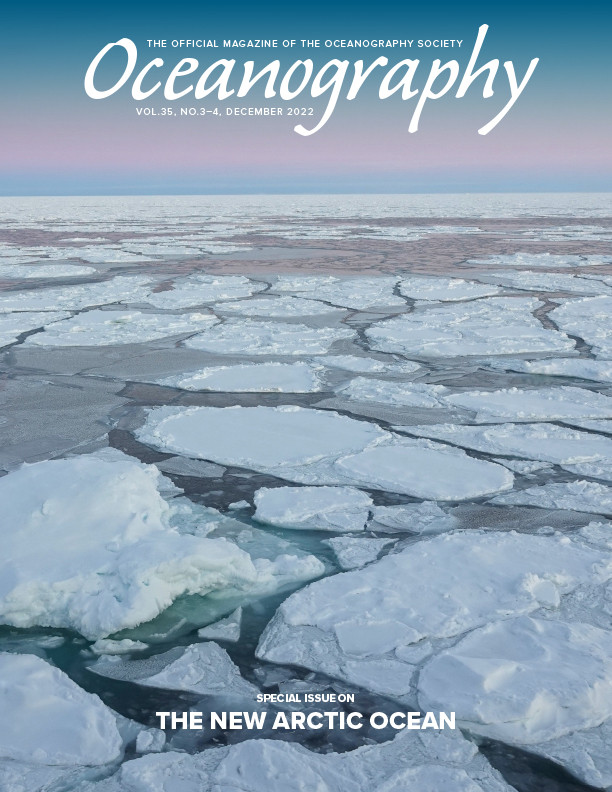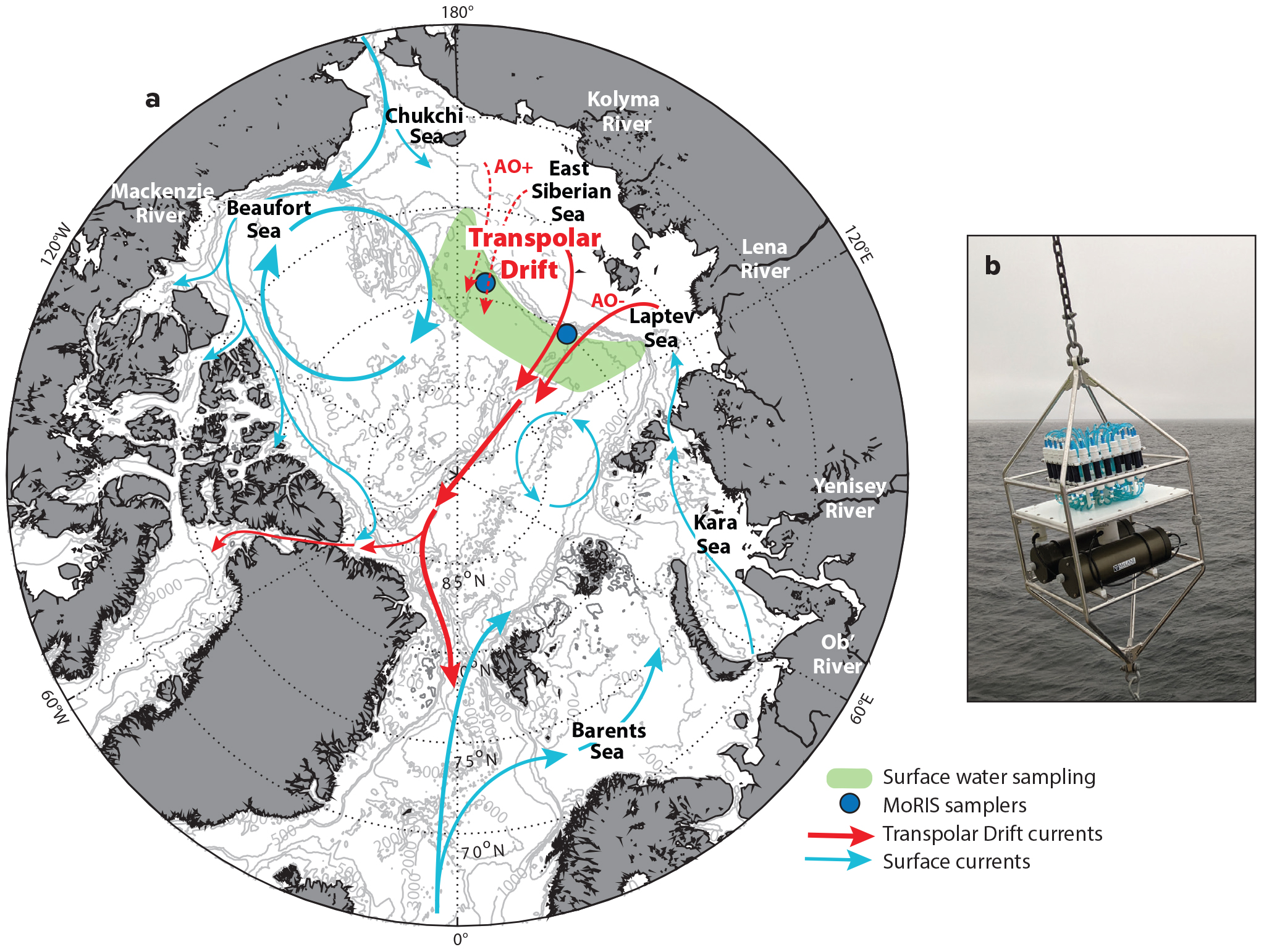Full Text
The transport of elements from terrestrial sources to the open ocean is particularly important in the Arctic, where continental shelves comprise half the ocean area (Jakobsson, 2002) and over 10% of the world’s river water is discharged (McClelland et al., 2012). Climate change is further increasing land-ocean exchange by thawing permafrost, increasing river discharge, and enhancing coastal erosion (Günther et al., 2013; Moon et al., 2021).
Radium (Ra) is constantly produced through the decay of thorium isotopes in sediments, and it is soluble in seawater, so coastlines, continental shelves, and benthic sediments act as sources of Ra to the water column. Thus, Ra isotopes are powerful tracers of terrestrial-derived elements and can be used to track shifts in the chemistry of the Arctic Ocean that may be driven by climate change. Higher levels of Ra in surface waters are indicative of a more significant input of elements from coasts and continental shelves (Kipp et al., 2018; Rutgers van der Loeff et al., 2018). Although Ra itself is not biologically utilized, it acts as a quasi-conservative tracer for sediment- and porewater-derived nutrients such as carbon and trace metals (Charette et al., 2020).
To better understand if and how climate warming is driving an increased flux of shelf-derived materials to the Arctic Ocean, we established the Arctic Radium Isotope Observing Network (ARION). This combined shipboard and mooring-based observational program, supported by the US National Science Foundation’s Office of Polar Programs (NSF-OPP) Arctic Observing Network, will allow us to collect seasonal and interannual time-series measurements of radium isotopes in Arctic surface waters. Such a high-resolution record will make it possible to distinguish climate-related changes in shelf-derived material fluxes from seasonal changes (e.g., river inputs, water column overturning) and natural variability (e.g., Arctic Oscillation). We are particularly interested in monitoring the levels of Ra-228 in the Transpolar Drift (TPD), a strong surface current that carries river- and shelf-influenced waters from the East Siberian and Laptev Seas across the central Arctic (Figure 1a). Radium will serve as a tracer for other biologically important elements that are transported in the TPD, such as dissolved organic carbon, iron, and copper (Charette et al., 2020).
The first goal of the ARION program, to establish a seasonal time series, will be accomplished using novel Moored Radium In-situ Samplers (MoRIS) developed through a collaboration with McLane Research Laboratories Inc. Samplers will be deployed on two moorings located on the slopes of the Laptev and East Siberian Seas, where the TPD originates, and will collect monthly samples over a two-year deployment (Figure 1b). Year-round monthly sampling by MoRIS will fill the research gap that currently exists due to the prohibitive logistical challenges of conducting sampling in the Arctic during seasons with high sea ice coverage. Most of our understanding of Arctic Ocean chemistry comes from shipboard surveys during the Arctic summer months; MoRIS will help provide context for these data.
|
|
The seasonal time series will be supplemented by biennial surface water sampling of Ra isotopes in the TPD along the East Siberian and Laptev Sea slopes, extending the existing record (which currently consists of four time points in 1994, 2007, 2011, and 2015) through 2025. Such a long-term assessment is required to determine if Arctic Ocean chemistry is shifting in response to rising temperatures. In addition to monitoring the absolute levels of Ra isotopes, we will use Ra isotope ratios, water isotopes, and water mass modeling to distinguish between different drivers of change, such as increased river discharge, increased shelf sediment inputs, or increased influence from Atlantic- or Pacific-derived waters.
These project goals will be accomplished through a collaboration with the Nansen and Amundsen Basins Observational System (NABOS), another NSF-OPP funded program that has been monitoring the physical oceanography of the eastern Arctic since the early 2000s (Pnyushkov and Polyakov, 2022, in this issue). The first TPD survey and MoRIS deployment took place on a NABOS-led cruise in fall 2021. In 2023, we will recover the monthly samples collected by MoRIS, redeploy the samplers for another two-year period, and add another time point to the surface water monitoring. In 2025, the second set of monthly samples will be recovered, and surface water Ra levels will be measured again. The physical oceanographic data collected by the NABOS team will complement our isotopic measurements, ensuring that our results will be of use to a broad audience.
ARION also includes international collaborators, who will collect water samples for Ra isotopes in the nearshore shelf environment and elsewhere in the Arctic basin. These measurements will provide information about the upstream and downstream TPD endmembers and widen the reach of our observing network.
Through ARION, we aim to improve our understanding of how climate change is impacting the chemistry of the Arctic Ocean and how fast those changes are occurring. This knowledge will in turn improve predictions of the biological consequences of the changing climate, not only in the Arctic but also in the downstream North Atlantic.


